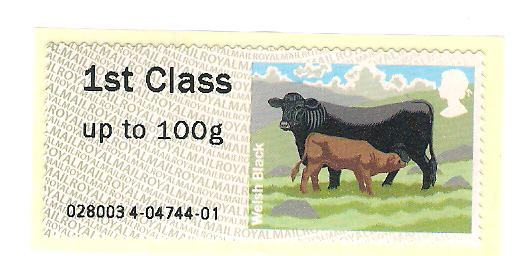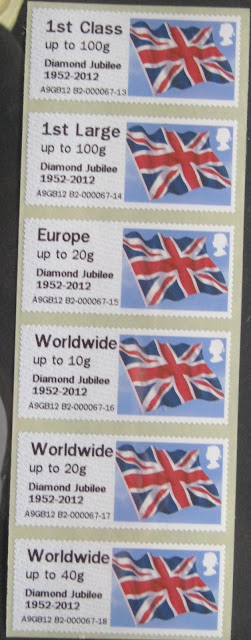Collecting on a Shoestring 4: Luck Finds
The basic rule to remember when buying for your collection
is not to spend more than you can afford. There is no point in bankrupting
yourself to obtain that special item.
Most beginners start by building a general collection
usually with packet stamps and items from incoming mail. However, once one as
decided to specialise then packet stamps rarely fill the gaps. Finding local
stamp dealers and spotting adverts for stamp fairs give one access to a wide
range of stock. Talking to these dealers and cultivating a relationship can pay
dividends. They see you as a potential client and, as such, may keep an eye on
potential stock which may be in your area of study. They are also a good source
of advice on your collection.
Many dealers keep a general stock but often they specialise
in one or two areas. If they do not stock your speciality, they maybe able to
suggest someone who does. They may also know of stamp clubs/philatelic
societies in the local area who may also help you find material and information
to help with one’s collecting area.
It is often useful to have some sort of checklist of what
you have and what you are looking for. One country collections are easy where
one can just use a one country catalogue or a database or excel listing.
Dealers present material for sale I stock books, packets or
even loose sheets that have been obtained from breaking up other collections. They
may also have a general “junk” box which all sorts of odds end up in. These
odds, again, may be from old collections, job lots from offices getting rid of
old correspondence, material that is slow to move or even envelopes received by the dealer as correspondence. Many dealers may even have trays full of
postcards ordered either by location or subject.
Auction catalogues are also produced by a number of dealers
and organisations. These may help you to find elusive items. Visiting a dealer
or fair is no guarantee of finding elusive items though sometimes one does have
a bit of luck.
On one occasion, I went to the Scottish Philatelic Congress
meeting at Stirling. An exhibition/competition was run
in association with the Congress and the material was on display. I was
particularly interested in a couple of frames which showed the use of Transorma
operator idents on Dutch envelopes in the late 1920s to early 1930s.
The Transorma was the first successful sorting machine.
Operators keyed in a code which diverted the item to a particular box. An
identification character or characters were stamped on the envelope, usually in
red, to indicate who the operator of the machine was.
I came away from those frames very impressed and thinking
that there was no way I was going to find even one item from this period. So I
started going round the dealers’ stalls. On one stall I was fortunate to find
one of these envelopes. It is the only one that I have ever found.
As can be seen, there is a line of red type lettering down
the centre of the envelope. These were printed on the envelope as it was pushed
past an inked roller identifying the operator. More modern versions had single
letters, numbers or double letters.

This postcard, from 1960. has a red “D” next to Connan’s
Quay in the address. This letter is the ident applied by the operator of one of
the Transorma’s that were installed at Brighton between
1935 and 1967ish. These markings are relatively common on postcards from Brighton
(Sussex) found
at fairs. It should be noted that there are about 110 varieties of these marks
from Brighton and some are exceptionally rare with only
one copy reported. However, a representative collection may be produced on a
restricted budget. I haven’t erased the dealer’s price from the card but it
does indicate the typical price of such items in the 1980s. Typically, the
dealer’s prices for these cards were based on the better understood price of
the postcard rather than the Transorma mark.
Circa 1978, a
“new” dealer was setting up close to where I was living. The shop was a bit
dark but that was expected given the area. He has since, become more affluent
with a shop in the city centre. On one occasion, this dealer purchased a
quantity of stock from a bank that was clearing out old storerooms. He was
selling the material off at 50p per envelope for Victorian material. It doesn’t
seem expensive today but the equivalent of Jobseekers at that time was £6 per
week. Students were no better off with the full grant for those living at home
being around £13 per week to cover transport, books, clothing, food, etc. I did
manage to afford a few items to put away.

One such item was a pre-stamp letter from Edinburgh
to Hadington in 1808 (above and below). Of note is that the letter was its own
envelope folded and sealed with wax. There was an enclosure at one time which, I assume, was a copy of a letter from a Mr Falconer regarding what appears, from what is
present, a problem over a debt. This particular letter is of relatively minor matters
historically but it is a survivor and gives a snapshot of a problem in
someone’s life.
Look at the quality of James Dundas' handwriting compared to the 1960s example or even an example from today. One can see how fluid and graceful the lettering is in 1808. There is still some in the 1960s hand but... I will leave you to make your own conclusions over the quality of a handwritten example from today. There are other items out there which document more important
events. Maybe looking through a dealer’s stock you might find such a gem.
Looking back from today's perspective, I wish that I had bought more but that brings
us back to the start of this item – never spend more than what you can afford.












































